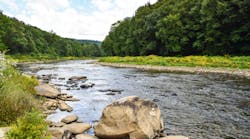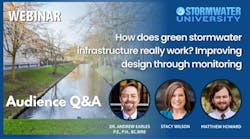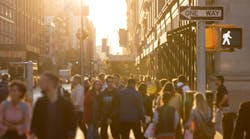Introduction
One of Kentucky’s largest cities, Bowling Green, houses a variety of manufacturers just east of the Historic District of downtown. These facilities produce well known quality products, such as the iconic Corvette1. But these plants also inherently contribute to the surrounding environmental concerns and potential stormwater pollution. However, facilities in the area are starting to address challenges individually such as the Louisville Road Mini Storage site, looking to improve on-site stormwater treatment.
Goals
Storage facilities see frequent traffic and an abundance of packaging material. In many cases, small, light-weight plastics and trash are unintentionally discarded, and when introduced untreated to stormwater, they can contaminate water bodies downstream and potentially damage ecosystems and aquatic wildlife. The facility owner is working closely with the City of Bowling Green to add an approved treatment device for on-site TSS and trash removal, suitable for the space available and within budget.
The challenge of plastics in stormwater is that if treatment doesn’t occur close to the source, such as a storm drain, the plastic could immediately start breaking or splintering into smaller pieces from abrasion. Any plastic particles smaller than 5mm are considered microplastics and typically mistaken as food to wildlife; additionally, these plastic particles limit remediation options.
Solution
Stormwater separators use a series of sediment chambers, separated by baffles, to isolate pollutants from runoff. Sediment falls to the bottom of the settling chamber while larger debris, such as plastics and trash are contained using a screen, allowing water to flow freely through the system during treatment. The City of Bowling Green Public Works approved and recommended Bio Clean’s DSBB Separator.
Addressing the required treatment flow rate, 8.5 CFS with a max flow rate of 13.85 CFS, was accomplished with a 7’x14’ DSBB Separator. This size DSBB Separator offers a combined 98 square feet of settling area in the three chambers and can hold over 75 cubic feet of plastics, debris, and organics in a dry state, to prevent nutrient leaching. That is more than 1,200 standard plastic water bottles2 potentially staying out of surrounding water bodies.
The NJCAT and NJDEP approved DSBB Separator is an advanced stormwater treatment system utilizing a non-clogging screen technology and hydrodynamic separation to capture pollutants, such as TSS, sediment, plastics, trash, and debris. The non-clogging screen stores captured debris in a dry state, suspended above the sediment chambers, minimizing nutrient leaching and allows for easier maintenance.
Not only was the DSBB Separator recommended, this full capture solution is more affordable and could be sized smaller than other options without sacrificing performance.
Conclusion
The city’s recommendation of the DSBB helped the owner save money while meeting local regulations and protecting downstream waterways from trash, plastics, and TSS. The DSBB Separator and Bowling Green, Kentucky are the same breed. Made in the USA, tough, efficient and proud to offer customers a quality product.
[1] https://en.wikipedia.org/wiki/Bowling_Green,_Kentucky
[2] https://www.bottleyourbrand.com/answers/bottled-water-info/bottle-and-label-size-information#:~:text=The%2016.9%20oz.,a%20white%20flat%20cap%20only
Editor's Note: Scranton Gillette Communications and the SGC Water Group are not liable for the accuracy, efficacy and validity of the claims made in this piece. The views expressed in this content do not reflect the position of the editorial teams of Water & Wastes Digest, Water Quality Products and Storm Water Solutions.






